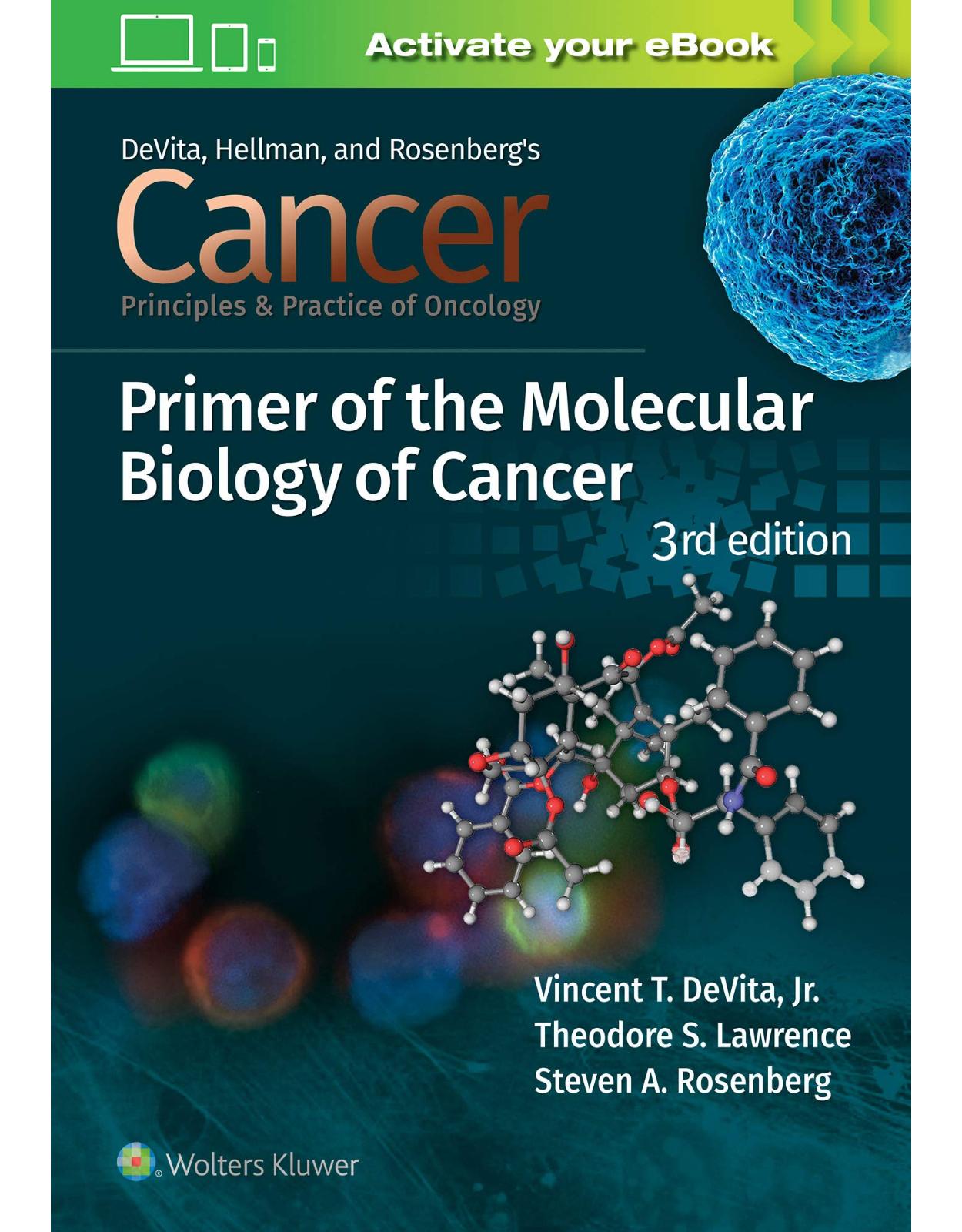
Cancer: Principles and Practice of Oncology Primer of Molecular Biology in Cancer
Livrare gratis la comenzi peste 500 RON. Pentru celelalte comenzi livrarea este 20 RON.
Disponibilitate: La comanda in aproximativ 4 saptamani
Editura: Lippincott Williams and Wilkins
Limba: Engleza
Nr. pagini: 824
Coperta: Paperback
Dimensiuni: 15.3 x 22.9 cm
An aparitie: 6 April 2020
Recent scientific advances have revolutionized cancer research and practice, creating a body of molecular biology information that is important to research scientists and clinical oncologists alike. Cancer: Principles and Practice of Oncology: Primer of the Molecular Biology of Cancer, 3rd Edition, keeps you up to date with all that’s new in this rapidly changing field.
Derived from DeVita, Hellman, and Rosenberg’s Cancer: Principles and Practice of Oncology – widely regarded as the definitive clinical reference in oncology – the third edition of this popular Primer provides a single-volume, highly focused reference on every important frontier in the molecular biology of cancer.
- Compiles the knowledge and experience of leading scientists and clinicians in the field.
- Provides separate chapters on each of the 18 most common cancer types, with state-of-the-art information on how molecular biology advances are impacting clinical practice.
- Includes a thorough chapter on genetic counseling and genetic testing to help you navigate the challenges and ethical dilemmas of cancer genetics.
- Covers key topics such as Hallmarks of Cancer, Precision Medicine in Oncology, Cancer Immunotherapy, Pharmacogenomics, and many more.
Enrich Your Ebook Reading Experience
- Read directly on your preferred device(s), such as computer, tablet, or smartphone.
- Easily convert to audiobook, powering your content with natural language text-to-speech.
Table of Contents:
1. Contributors
2. PART I: Principles of Molecular Oncology
3. 1. The Cancer Genome
4. Yardena Samuels, Alberto Bardelli, Yochai Wolf, and Carlos López-Otin
5. Introduction
6. Cancer Genes and Their Mutations
7. Identification of Cancer Genes
8. Cancer Gene Discovery by Sequencing Candidate Gene Families
9. Mutational Analysis of Exomes Using Sanger Sequencing
10. Next-Generation Sequencing and Cancer Genome Analysis
11. Whole-Genome Analysis Utilizing Second-Generation Sequencing
12. Whole-Exome Analysis Utilizing Second-Generation Sequencing
13. Somatic Alteration Classes Detected by Cancer Genome Analysis
14. Pathway-Oriented Models of Cancer Genome Analysis
15. Passenger and Driver Mutations
16. Networks of Cancer Genome Projects
17. The Genomic Landscape of Cancers
18. Single-Cell Genomics
19. Integrative Analysis of Cancer Genomics
20. Immunogenomics
21. The Cancer Genome and the New Taxonomy of Tumors
22. Liquid Biopsies as a Diagnosis Tool
23. Clinical Applications of Liquid Biopsies
24. Cancer Genomics and Drug Resistance
25. Perspectives of Cancer Genome Analysis
26. Acknowledgments
27. 2. Molecular Methods in Cancer
28. Larissa V. Furtado, Jay L. Hess, and Bryan L. Betz
29. Applications of Molecular Diagnostics in Oncology
30. Biomarker Genetics
31. Use of Biomarkers in Diagnosis
32. Use of Biomarkers in Prognosis
33. Use of Biomarkers in Predicting Response to Therapy
34. Use of Biomarkers in Therapeutic Disease Monitoring
35. Use of Biomarkers in Risk Assessment and Cancer Prevention
36. The Clinical Molecular Diagnostics Laboratory: Rules and Regulations
37. Specimen Requirements for Molecular Diagnostics
38. Molecular Diagnostics Testing Process
39. Targeted Mutation Analysis Methods
40. Polymerase Chain Reaction
41. Real-time Polymerase Chain Reaction
42. Reverse-Transcription Polymerase Chain Reaction
43. Allele-Specific Polymerase Chain Reaction
44. Fragment Analysis
45. Sanger Sequencing
46. Pyrosequencing
47. Methylation Analysis
48. Microsatellite Instability Analysis/Assessment of Mismatch Repair Deficiency
49. Fluorescence In Situ Hybridization
50. Whole-Genome Analysis Methods
51. Next-Generation Sequencing
52. Genomic Microarrays
53. Expression Panels
54. Immunohistochemistry for Tumor Biomarkers
55. PD-L1
56. ALK and ROS1
57. BRAFV600E
58. Cell-Free DNA Technologies
59. 3. Hallmarks of Cancer: An Organizing Principle for Cancer Medicine
60. Douglas Hanahan and Robert A. Weinberg
61. Introduction
62. Hallmark Capabilities, In Essence
63. Sustaining Proliferative Signaling
64. Somatic Mutations Activate Additional Downstream Pathways
65. Disruptions of Negative-Feedback Mechanisms that Attenuate Proliferative Signaling
66. Excessive Proliferative Signaling Can Trigger Cell Senescence
67. Evading Growth Suppressors
68. Mechanisms of Contact Inhibition and Its Evasion
69. Corruption of the Transforming Growth Factor β Pathway Promotes Malignancy
70. Resisting Cell Death
71. Autophagy Mediates Both Tumor Cell Survival and Death
72. Necrosis Has Proinflammatory and Tumor-Promoting Potential
73. Enabling Replicative Immortality
74. Reassessing Replicative Senescence
75. Delayed Activation of Telomerase May Both Limit and Foster Neoplastic Progression
76. Inducing Angiogenesis
77. Gradations of the Angiogenic Switch
78. Endogenous Angiogenesis Inhibitors Present Natural Barriers to Tumor Angiogenesis
79. Pericytes Are Important Components of the Tumor Neovasculature
80. A Variety of Bone Marrow–Derived Cells Contribute to Tumor Angiogenesis
81. Activating Invasion and Metastasis
82. The Epithelial-to-Mesenchymal Transition Program Broadly Regulates Invasion and Metastasis
83. Heterotypic Contributions of Stromal Cells to Invasion and Metastasis
84. Plasticity in the Invasive Growth Program
85. Distinct Forms of Invasion May Underlie Different Cancer Types
86. The Daunting Complexity of Metastatic Colonization
87. Reprogramming Energy Metabolism
88. Evading Immune Destruction
89. Two Ubiquitous Characteristics Facilitate the Acquisition of Hallmark Capabilities
90. An Enabling Characteristic: Genome Instability and Mutation
91. An Enabling Characteristic: Tumor-Promoting Inflammation
92. The Constituent Cell Types of the Tumor Microenvironment
93. Cancer-Associated Fibroblasts
94. Endothelial Cells
95. Pericytes
96. Immune Inflammatory Cells
97. Stem and Progenitor Cells of the Tumor Stroma
98. Heterotypic Signaling Orchestrates the Cells of the Tumor Microenvironment
99. Coevolution of the Tumor Microenvironment During Carcinogenesis
100. Cancer Cells, Cancer Stem Cells, and Intratumoral Heterogeneity
101. Therapeutic Targeting of the Hallmarks of Cancer
102. Conclusion and a Vision for the Future
103. Acknowledgment
104. 4. Oncogenic Viruses
105. Christopher B. Buck, Lee Ratner, and Giovanna Tosato
106. Principles of Tumor Virology
107. Papillomaviruses
108. History
109. Tissue Tropism and Gene Functions
110. Human Papillomavirus Vaccines
111. Oropharyngeal Cancer
112. Nonmelanoma Skin Cancer
113. Bladder Cancer
114. Polyomaviruses
115. History
116. BK Polyomavirus
117. Merkel Cell Polyomavirus
118. Other Human Polyomaviruses
119. Epstein-Barr Virus
120. History
121. Epstein-Barr Virus Life Cycle
122. Lymphomas
123. Carcinomas
124. Prevention and Treatment
125. Kaposi Sarcoma Herpesvirus
126. History and Epidemiology
127. Kaposi Sarcoma–Associated Herpesvirus in Kaposi Sarcoma
128. Lymphoproliferative Disorders
129. Animal and Human Retroviruses
130. Human T-Cell Leukemia Virus Epidemiology
131. Human T-Cell Leukemia Virus Molecular Biology
132. Clinical Characteristics and Treatment of Human T-lymphotropic Virus 1–Associated Malignancies
133. Hepatitis Viruses
134. Hepatitis B Virus
135. Hepatitis C Virus
136. Hepatitis Virus Pathogenesis
137. Clinical Characteristics and Treatment of Hepatitis Virus–Associated Malignancies
138. Conclusion
139. 5. DNA Repair in Normal and Cancer Cells
140. Meredith A. Morgan and Theodore S. Lawrence
141. Introduction
142. Radiation-Induced DNA Damage
143. Cellular Responses to Radiation-Induced DNA Damage
144. Cell Cycle Checkpoint Pathways
145. DNA Repair
146. Metabolism
147. Innate Immune Response
148. Chromosome Aberrations Result from Faulty DNA Double-Strand Break Repair
149. Membrane Signaling
150. The Effect of Radiation on Cell Survival
151. In Vivo Survival Determination of Normal Tissue Response to Radiation
152. In Vivo Determination of Tumor Response to Radiation
153. Factors That Affect Radiation Response
154. The Fundamental Principles of Radiobiology
155. Dose-Rate Effects
156. Relative Biologic Effectiveness
157. Stereotactic Radiosurgery and Stereotactic Body Radiation Therapy
158. Cell Cycle
159. Tumor Oxygenation
160. Immune Response
161. Genetic Signatures
162. Drugs That Affect Radiation Sensitivity
163. Antimetabolites
164. Platinums and Temozolomide
165. Taxanes
166. Molecularly Targeted Agents
167. Immunotherapy
168. Radiation Protection
169. 6. Microbiome and Cancer
170. Giorgio Trinchieri
171. Introduction
172. Cancer as a Disease of the Metaorganism
173. Bacteria as Cause of Cancer
174. Helicobacter pylori and Stomach Cancer
175. Colorectal Cancer
176. Tumors in Tissues Not Directly Colonized by the Microbiota
177. The Microbiota Modulates Cancer-Predisposing Conditions and Comorbidity
178. Bacteria as Cancer Drugs
179. Microbiota and Drug Metabolism
180. Microbiota and Chemotherapy
181. Microbiota and Immunotherapy
182. Immune Checkpoint Blockers: Anti-CTLA-4
183. Immune Checkpoint Blockers: Anti-PD-1/PD-L1
184. Looking Forward
185. 7. Precision Medicine in Oncology
186. James H. Doroshow
187. Introduction
188. Approach to Precision Medicine in Oncology
189. Next-Generation DNA Sequencing for Precision Oncology
190. Broadening the Spectrum of Molecular Characterization
191. Preclinical Models to Inform Precision Oncology
192. Role of Molecular Pharmacodynamics and Diagnostics in Precision Oncology
193. Human Biospecimens for Molecular Characterization
194. Molecular Pharmacodynamics in Precision Oncology
195. Predictive Diagnostic Assays
196. Precision Oncology Clinical Trials and Trial Designs
197. Imaging and Precision Oncology
198. Precision Prevention
199. Future Prospects
200. 8. Cancer Immunotherapy
201. Jeffrey Weber and Iulia Giuroiu
202. Introduction
203. Interferon-α
204. Interleukin-2
205. Talimogene Laherparepvec
206. Granulocyte Macrophage Colony-Stimulating Factor
207. Tumor-Infiltrating Lymphocytes
208. Checkpoint Inhibitors—Cytotoxic T-Lymphocyte Antigen 4 and Programmed Cell Death Protein 1
209. Cytotoxic T-Lymphocyte Antigen 4 Blockade
210. Programmed Cell Death Protein 1 and Programmed Cell Death Protein Ligand 1 Blockade
211. Melanoma
212. Non–small-cell Lung Cancer
213. Mismatch-Repair Deficient or Microsatellite Instability-High Cancers
214. Renal Cell Carcinoma
215. Hodgkin Lymphoma
216. Head and Neck Squamous Cell Carcinoma
217. Urothelial Carcinoma
218. Merkel Cell Carcinoma
219. Hepatocellular Carcinoma
220. Gastric Cancer
221. Cervical Cancer
222. Primary Mediastinal Large B-Cell Lymphoma
223. Dosing
224. Vaccines
225. Sipuleucel-T
226. Conclusion
227. 9. Immunotherapy Agents
228. Jeffrey A. Sosman and Douglas B. Johnson
229. Introduction
230. Human Tumor Antigens
231. Mutanome-Associated Neoantigens
232. Tumor Vaccines
233. Personalized Neoantigen Vaccination
234. Immune Checkpoint Inhibitors
235. Other Immune Checkpoint Inhibitors in Development
236. Anti-TIGIT
237. TIM-3
238. LAG-3
239. KIR
240. CD73
241. VISTA
242. B7-H3
243. Immune Checkpoint Activators
244. 4-1BB (CD137)
245. GITR
246. ICOS
247. CD40
248. CD27-CD70
249. OX40
250. Oncolytic Viruses
251. Talimogene Laherparepvec
252. Other Oncolytic Viruses
253. Factors to Activate Immune Effector Cells
254. Cytokines
255. IL-2 Variant Molecules
256. Signaling Modulation
257. STAT3 Inhibition
258. PI3Kδ Inhibitors
259. PI3Kγ Inhibitors
260. Chemokine Inhibitors
261. CXCR2 Inhibitors
262. CCR2 Inhibitors
263. CXCR4 Inhibitors
264. CCR4 Antibodies
265. CCR5 Inhibitors
266. Soluble Factors
267. IDO Inhibition
268. Arginase Inhibitor
269. TGF-β Kinase Inhibitors
270. Adenosine A2α Receptor Axis
271. Adenosine Receptor Inhibitors
272. Innate Immune Modulation
273. Pathogen-Associated Molecular Patterns, Damage-Associated Molecular Patterns, and Pattern Recognition Receptors
274. Toll-Like Receptor Modulators
275. STING Agonists
276. Anti-CD47 Monoclonal Antibodies
277. Colony-Stimulating Factor 1 Receptor Inhibition
278. Bifunctional Fusion Proteins
279. Immunocytokines
280. Adoptive Cell Therapy
281. Chimeric Antigen Receptor T-Cell Therapy
282. 10. Monoclonal Antibodies
283. Hossein Borghaei, Matthew K. Robinson, Gregory P. Adams, and Louis M. Weiner
284. Introduction
285. Immunoglobulin Structure
286. Structural and Functional Domains
287. Modified Antibody-Based Molecules
288. Factors Regulating Antibody-Based Tumor Targeting
289. Antibody Size
290. Tumor Antigens
291. Half-Life/Clearance Rate
292. Glycosylation
293. Unconjugated Antibodies
294. Cell-Mediated Cytotoxicity
295. Complement-Dependent Cytotoxicity
296. Altering Signal Transduction
297. Immunoconjugates
298. Antibody–Drug Conjugates
299. Radioimmunoconjugates
300. Antibodies Approved for Use in Solid Tumors
301. Trastuzumab
302. Pertuzumab
303. Cetuximab
304. Panitumumab
305. Necitumumab
306. Bevacizumab
307. Ado-Trastuzumab Emtansine
308. Ramucirumab
309. Denosumab
310. Antibodies Used in Hematologic Malignancies
311. Rituximab
312. ofatumumab
313. Alemtuzumab
314. Brentuximab Vedotin
315. Inotuzumab Ozogamicin
316. Obinutuzumab
317. Blinatumomab
318. Daratumumab
319. Elotuzumab
320. Dinutuximab
321. Olaratumab
322. Conclusion
323. 11. Cancer Susceptibility Syndromes
324. Alice Hawley Berger and Pier Paolo Pandolfi
325. Introduction
326. Principles of Cancer Susceptibility
327. The “Two-Hit” Paradigm
328. What Is the Function of a Tumor Suppressor?
329. Haploinsufficiency and Compound Haploinsufficiency
330. Genetic Testing
331. Cancer Susceptibility Syndromes
332. Retinoblastoma
333. Incidence
334. Genetic Basis
335. Molecular Mechanism
336. Mouse Models
337. Clinical Features and Therapeutic Intervention
338. Most Prevalent Syndromes
339. Lynch Syndrome
340. Hereditary Breast and Ovarian Cancer
341. Neurofibromatosis Type 1
342. Familial Adenomatous Polyposis
343. Other Syndromes, by Function
344. Genomic Integrity and Apoptosis
345. Regulation of Protein Translation
346. Proliferation
347. Angiogenesis
348. Principles of Cancer Chemoprevention
349. Emerging Knowledge and New Lessons
350. Germline Mutations in Sporadic Cancer
351. Weak Modifiers
352. Epigenetic Factors
353. Role of Noncoding RNAs
354. The Regulatory Genome
355. High-Throughput Methods for Understanding Cancer Variants
356. Conclusion
357. 12. Pharmacogenomics
358. Christine M. Walko and Howard L. McLeod
359. Introduction
360. Pharmacogenomics of Tumor Response
361. Pathway-Directed Anticancer Therapy
362. Genetic-Guided Therapy: Practical Issues in Somatic Analysis
363. Pharmacogenomics of Chemotherapy Drug Toxicity
364. Thiopurine Methyltransferase
365. Dihydropyrimidine Dehydrogenase
366. Conclusions and Future Directions
367. 13. Genetic Counseling
368. Danielle C. Bonadies, Meagan B. Farmer, and Ellen T. Matloff
369. Introduction
370. Who is a Candidate for Cancer Genetic Counseling?
371. Components of the Cancer Genetic Counseling Session
372. Precounseling Information
373. Family History
374. Dysmorphology Screening
375. Risk Assessment
376. Genetic Testing
377. Options for Surveillance, Risk Reduction, and Tailored Treatment
378. Follow-up
379. Issues in Cancer Genetic Counseling
380. Genetic Test Selection and Approaches
381. Management of the Patient with a Pathogenic Variant in a Moderate-Risk or Lesser Known Gene
382. Genetic Testing in Children
383. Reproductive Issues
384. Potential Germline Implications of Tumor Genomic Profiling
385. Changes in Delivery Models
386. Direct-to-Consumer Genetic Testing
387. Psychosocial Issues
388. Confidentiality
389. Insurance and Discrimination Issues
390. Future Directions
391. Whole-Genome Sequencing and Whole-Exome Sequencing
392. General Population Testing
393. CRISPR
394. Conclusion
395. PART II: Molecular Biology of Individual Cancers
396. 14. The Molecular Biology of Head and Neck Cancers
397. Thomas E. Carey, Mark E. Prince, and J. Chad Brenner
398. Incidence, Risk Factors, and Etiology
399. Oral Tongue Cancer in Young Patients
400. High-Risk Hpv in Oropharyngeal Cancer
401. Molecular Mechanisms in Hnscc
402. The Cancer Genome Atlas Project
403. Inhibition of Hnscc Immune Escape
404. Cancer Stem Cells
405. 15. The Molecular Biology of Lung Cancer
406. Jill E. Larsen and John D. Minna
407. Introduction
408. Genomics: Tools for Identification, Prediction, and Prognosis
409. Somatic Landscape of Lung Cancer
410. Characterization of Aberrant Pathways
411. Transcriptome Profiling
412. Proteomic Approaches
413. Lessons Learned and Future Directions
414. Functional Genomics in Lung Cancer
415. Genome-wide RNA-Based and shRNA-Based Screening
416. CRISPR-Cas9 Gene Editing
417. Preclinical Model Systems for Studying Lung Cancer
418. Genetic and Epigenetic Alterations in Lung Cancer
419. EGFR/HER2/MET Signaling
420. EGFR
421. ERBB2 (HER2)
422. MET
423. RAS/RAF/MAPK Pathway
424. RAS
425. RAF
426. MEK (MAP2K1 or MEK1)
427. MYC
428. Pl3K/AKT/mTOR Pathway
429. STK11 (LKB1)
430. Insulin Growth Factor Pathway
431. Fibroblast Growth Factor Pathway
432. The p53 Pathway
433. The p16INK4a-RB Pathway
434. Fusion Proteins
435. ALK
436. ROS1
437. RET
438. NTRK
439. BRAF
440. EGFR
441. Epigenetic Changes in Lung Carcinogenesis
442. Methylation and Chromatin Remodeling
443. Noncoding RNAs
444. NFIB, a Metastasis-Inducing Transcription Factor
445. KDM Lysine Demethylases (JumonjiC) as an Epigenomic Drug Resistance Mechanism
446. Metastasis and the Tumor Microenvironment
447. Epithelial-to-Mesenchymal Transition
448. Angiogenesis
449. Immune Checkpoint Inhibition
450. Exosomes as a Source of Information on Tumor Molecular Alterations
451. Lung Cancers Stem Cells
452. Telomerase-Mediated Cellular Immortality in Lung Cancer
453. Clinical Translation of Molecular Data
454. Current Translation of Rationale-based Targeted Therapy
455. Potential for Future Clinical Translation
456. 16. Molecular Biology of the Esophagus and Stomach
457. Anil K. Rustgi
458. Introduction
459. Molecular Biology of Esophageal Cancer
460. Epidermal Growth Factor Receptor
461. Cyclin D1 and p16INK4a
462. TP53 Tumor Suppressor Genes
463. Telomerase Activation
464. Tumor Invasion and Metastasis
465. Models of Esophageal Squamous Cell Cancer and Esophageal Adenocarcinoma
466. Functional Genomics
467. Molecular Biology of Gastric Cancer
468. Inherited Susceptibility
469. Role of Helicobacter pylori Infection and Other Host–Environmental Factors
470. Molecular Genetic Alterations
471. Models of Gastric Cancer
472. 17. The Molecular Biology of Pancreas Cancer
473. Scott E. Kern and Ralph H. Hruban
474. Introduction
475. Common Genetic Changes in Pancreatic Ductal Adenocarcinoma
476. Less-Prevalent Genetic Changes in Pancreatic Ductal Adenocarcinoma
477. Other Neoplastic Lesions
478. 18. Molecular Biology of Liver Cancer
479. Jens U. Marquardt and Snorri S. Thorgeirsson
480. Introduction
481. Genetic Alterations in Liver Cancer
482. Epigenetic Alterations in Liver Cancer
483. Mutational Landscape of Genetic Alterations—The Next Generation
484. The Microenvironment of Liver Cancer
485. Classification and Prognostic Prediction of Hepatocellular Carcinoma
486. Molecular Basis of Cholangiocarcinoma
487. Conclusion and Perspective
488. 19. Molecular Biology of Colorectal Cancer
489. Ramesh A. Shivdasani
490. Introduction
491. Multistep Models of Colorectal Cancer and Genetic Instability
492. Mutational and Epigenetic Landscapes in Colorectal Cancer
493. Insights from Mouse Intestinal Crypts and Human Colorectal Cancers Lead to a Coherent Model for Colorectal Cancer Initiation and Progression
494. WNT Signaling
495. Other Growth Factor Pathways
496. Inherited Syndromes of Increased Cancer Risk Highlight Early Events and Critical Pathways in Colorectal Tumorigenesis
497. Familial Adenomatous Polyposis and the Central Importance of WNT Signaling
498. Hereditary Nonpolyposis Colorectal Cancer and the Role of DNA Mismatch Repair
499. Other Inherited Syndromes with Elevated Colorectal Cancer Risk
500. Familial Juvenile Polyposis
501. Insights from Mendelian Syndromes, Genome-Wide Association Studies, and the Microbiome
502. Oncogene and Tumor Suppressor Gene Mutations in Colorectal Cancer Progression
503. The KRAS, BRAF, and PIK3CA Oncogenes
504. MYC, CDK8, and Control of Cell Growth and Metabolism
505. TP53 and Other Tumor Suppressors
506. Prognostic and Predictive Value of Tumor Genotypes and Molecular Properties
507. 20. Molecular Biology of Kidney Cancer
508. W. Marston Linehan and Laura S. Schmidt
509. Introduction
510. Clear Cell Renal Cell Carcinoma
511. von Hippel-Lindau Disease
512. Genetics of von Hippel-Lindau Disease: VHL Gene
513. Gene Mutated in Renal Cancer Families with Chromosome 3p Translocations
514. Sporadic Clear Cell Kidney Cancer: VHL Gene Mutation
515. Function of the von Hippel-Lindau Protein
516. Additional Genes Mutated in Clear Cell Kidney Cancer
517. Papillary Renal Cell Carcinoma
518. Hereditary Papillary Renal Carcinoma: Type 1 Papillary
519. Genetics of Hereditary Papillary Renal Carcinoma: MET Protooncogene
520. Hereditary Papillary Renal Carcinoma: Functional Consequences of MET Mutations
521. Sporadic Type 1 Papillary Renal Cell Carcinoma
522. Xp11.2 Translocation Renal Cell Cancer
523. Hereditary Leiomyomatosis and Renal Cell Carcinoma: Type 2 Papillary
524. Hereditary Leiomyomatosis and Renal Cell Carcinoma: Fumarate Hydratase Gene
525. Functional Consequences of Fumarate Hydratase Mutations
526. Sporadic Type 2 Papillary Renal Cell Carcinoma
527. Chromophobe Renal Cell Carcinoma
528. Birt-Hogg-Dubé Syndrome
529. Birt-Hogg-Dubé Syndrome: FLCN Gene
530. Function of the Birt-Hogg-Dubé Protein: Folliculin
531. Sporadic Chromophobe Renal Cell Carcinoma
532. Additional Types of Renal Cell Carcinoma
533. Tuberous Sclerosis Complex
534. Succinate Dehydrogenase–Associated Renal Cancer
535. Conclusion
536. 21. Molecular Biology of Bladder Cancer
537. Carolyn D. Hurst and Margaret A. Knowles
538. Introduction
539. Mutational Landscape
540. Mutation Rates, Mutational Signatures, and Mutational Processes
541. FGFR3, PIK3CA, and RAS Genes
542. Telomerase Reverse Transcriptase Promoter
543. TP53, RB1, and CDKN2A
544. Genes Involved in Chromatin Modification and Architecture
545. STAG2
546. Alterations in DNA Repair Pathways
547. Structural Alterations to the Genome
548. Heterogeneity and Clonal Evolution
549. Molecular Subtypes
550. DNA-Based Subtypes
551. Transcriptome-Based Subtypes
552. Therapeutic Opportunities and Future Outlook
553. 22. The Molecular Biology of Prostate Cancer
554. Charles Dai and Nima Sharifi
555. Introduction
556. The Genomic Landscape of Prostate Cancer
557. The Molecular Subtypes of Primary Prostate Cancer
558. ETS Family Gene Fusions
559. Speckle-Type POZ Protein Mutations
560. Forkhead Box A1 Mutations
561. Serine Peptidase Inhibitor, Kazal Type 1 Overexpression
562. Isocitrate Dehydrogenase 1 Mutations
563. The Clonal Evolution of Lethal Metastatic Prostate Cancer
564. Genetic Basis of Prostate Cancer Heritability
565. Androgen Signaling in Prostate Cancer
566. androgen Receptor Structure and Function
567. androgen Receptor Action
568. Intratumoral androgen Biosynthesis
569. Glucocorticoid Signaling in Treatment Resistance
570. Other Signaling Pathways in Prostate Cancer
571. Phosphatidylinositol 3-Kinase/AKT/Mammalian Target of Rapamycin Pathway
572. Other Signaling Pathways in Prostate Cancer
573. Cell Cycle Aberrations
574. Neuroendocrine Prostate Cancer
575. Areas of Ongoing Research and Emerging Therapeutic Approaches
576. DNA Repair Pathway
577. Epigenetic Alterations
578. Conclusion
579. 23. Molecular Biology of Gynecologic Cancers
580. Tanja Pejovic, Adam J. Krieg, and Kunle Odunsi
581. Introduction
582. Ovarian Cancer
583. Origins of Epithelial Ovarian Cancer
584. Molecular Pathways to Ovarian Cancer
585. Inherited Syndromes of Ovarian Cancers
586. Targeting Homologous Recombination Defects in Gynecologic Cancer
587. Ovarian Cancer Microenvironment, Metastases, and Angiogenesis
588. Ovarian Cancer Microenvironment
589. Angiogenesis and Tumor Hypoxia
590. Influences of the Microenvironment on Tumor Metastasis
591. Epigenetics
592. Role of Specific Immune Responses and Immunotherapy
593. Immune Inhibitory Network and Immune Checkpoint Inhibitors in Ovarian Cancer
594. Immunotherapy Clinical Trials in Ovarian Cancer
595. Adoptive Cellular Transfer Therapy
596. Endometrial Cancer
597. Type I Cancers
598. Type II Endometrial Cancer
599. Microsatellite Instability
600. PTEN
601. KRAS Mutations
602. β-Catenin
603. Cervix, Vaginal, and Vulvar Cancers
604. Role of Human Papillomavirus
605. Immune Evasion by Human Papillomavirus
606. Human Papillomavirus Vaccines
607. Adoptive T-Cell Therapy
608. 24. Molecular Biology of Breast Cancer
609. Ana T. Nunes, Tara Berman, and Lyndsay Harris
610. Introduction
611. Genetics of Breast Cancer
612. Hereditary Breast Cancer
613. High-Penetrance, Low-Frequency Genes
614. Moderate-Penetrance, Low-Frequency Genes
615. Low-Penetrance, High-Frequency Genes and Loci
616. Microsatellite Instability in Breast Cancer
617. Somatic Alterations in Breast Cancer
618. Copy Number Alterations in Breast Cancer
619. Transcriptional Profiles of Breast Cancer—Molecular Subtypes
620. Luminal Subtypes
621. HER2-Enriched Subtype
622. Triple-Negative Subtypes
623. Mutational Profiles in Breast Cancer by Molecular Subtype
624. Transcriptional Profiles of Breast Cancer—Prognosis and Benefit of Therapy
625. 70-Gene Assay (Mammaprint)
626. 21-Gene Recurrence Score (Oncotype DX)
627. Prediction Analysis of Microarray-50 (PAM50, PAM50 Risk of Recurrence Score, or Prosigna)
628. 12-Gene Risk Score (Endopredict)
629. Two-Gene Ratio (Breast Cancer Index)
630. Epigenetics of Breast Cancer
631. Protein/Pathway Alterations
632. Estrogen Receptor Pathway
633. Growth Factor Receptor Pathways
634. Human Epidermal Growth Factor Receptor 2
635. RAS and Phosphatidylinositol 3-Kinase Signaling Pathways
636. Cyclin-Dependent Kinases
637. 25. Molecular Biology of Endocrine Tumors
638. Zeyad T. Sahli, Brittany A. Avin, and Martha A. Zeiger
639. Endocrine Syndromes
640. Multiple Endocrine Neoplasia Type 1
641. Clinical Features
642. Molecular Genetics of MEN1
643. Multiple Endocrine Neoplasia Type 2
644. Clinical Features of MEN2A
645. Clinical Features of MEN2B
646. Molecular Genetics of MEN2
647. Multiple Endocrine Neoplasia Type 4
648. Carney Complex
649. Clinical Features
650. Molecular Genetics of Carney Complex
651. Adrenal Gland
652. Cortisol-Producing Adenomas
653. Aldosterone-Producing Adenomas
654. Pheochromocytoma
655. Adrenocortical Carcinoma
656. Parathyroid Gland
657. Hyperparathyroidism–Jaw Tumor Syndrome
658. Familial Hypocalciuric Hypercalcemia
659. Neonatal Severe Hyperparathyroidism
660. Autosomal Dominant Hypoparathyroidism
661. Familial Isolated Hyperparathyroidism
662. Pituitary Gland
663. Familial Isolated Pituitary Adenoma
664. X-linked Acrogigantism
665. McCune-Albright Syndrome
666. Paraganglioma, Pheochromocytoma, and Pituitary Adenoma Association
667. Dicer1 Syndrome
668. Thyroid Gland
669. Follicular Adenomas
670. Noninvasive Follicular Thyroid Neoplasm with Papillary-Like Nuclear Features
671. Papillary Thyroid Cancer
672. Follicular Thyroid Cancer
673. Hürthle Cell Carcinoma
674. Medullary Thyroid Cancer
675. Anaplastic Thyroid Cancer
676. Werner Syndrome
677. Acknowledgments
678. 26. Molecular Biology of Sarcomas
679. Samuel Singer and Cristina R. Antonescu
680. Introduction
681. Soft Tissue Sarcomas
682. Translocation-Associated Soft Tissue Sarcomas
683. Myxoid/Round Cell Liposarcoma
684. Ewing Sarcoma
685. Desmoplastic Small Round Cell Tumor
686. Synovial Sarcoma
687. Alveolar Rhabdomyosarcoma
688. Alveolar Soft Part Sarcoma
689. Dermatofibrosarcoma Protuberans
690. Extraskeletal Myxoid Chondrosarcoma
691. Solitary Fibrous Tumor and Hemangiopericytoma
692. Soft Tissue Sarcomas of Simple Karyotype Associated With Mutations
693. Desmoid Fibromatosis
694. Complex Soft Tissue Sarcoma Types
695. Well-Differentiated and Dedifferentiated Liposarcoma
696. Pleomorphic Liposarcoma
697. Myxofibrosarcoma and Undifferentiated Pleomorphic Sarcoma (Malignant Fibrous Histiocytoma)
698. Myxofibrosarcoma
699. Undifferentiated Pleomorphic Sarcoma (Malignant Fibrous Histiocytoma)
700. Leiomyosarcoma
701. Malignant Peripheral Nerve Sheath Tumor
702. Angiosarcoma
703. Bone and Cartilaginous Tumors
704. Cartilaginous Tumors
705. Enchondroma
706. Osteochondroma
707. Chondrosarcoma
708. Osteosarcoma
709. Future Directions: Next-Generation Sequencing and Functional Screens
710. 27. Molecular Biology of Cutaneous Melanoma
711. Michael A. Davies
712. Introduction
713. The Cancer Genome Atlas Effort in Cutaneous Melanoma
714. The Ras-Raf-Mapk Pathway
715. RAF Kinases
716. RAS Family GTPases
717. NF1
718. Additional Oncogenic Pathways
719. Cell Cycle Regulators
720. The p53 Pathway
721. The Phosphatidylinositol 3-Kinase Pathway
722. Receptor Tyrosine Kinases
723. RAC1
724. Telomerase
725. Triple Wild-Type Melanomas
726. Melanin Synthesis Pathway
727. MITF
728. The MC1R Pathway
729. Summary and Future Directions
730. 28. Molecular Biology of Central Nervous System Tumors
731. Mark W. Youngblood, Jennifer Moliterno Günel, and Murat Günel
732. Introduction
733. Pediatric Brain Tumors
734. Medulloblastoma
735. Low-Grade Glioma
736. High-Grade Glioma
737. Ependymal Tumors
738. Adult Brain Tumors
739. Low-Grade Glioma
740. High-Grade Glioma
741. Meningioma
742. Summary
743. Acknowledgments
744. 29. Molecular Biology of Lymphoma
745. Nicolò Compagno, Laura Pasqualucci, and Riccardo Dalla-Favera
746. Introduction
747. The Cell of Origin of Lymphoma
748. B-Cell Development and the Dynamics of the Germinal Center Reaction
749. T-Cell Development
750. General Mechanisms of Genetic Alterations in Lymphoma
751. Chromosomal Translocations
752. Aberrant Somatic Hypermutation
753. Copy Number Gains and Amplifications
754. Activating Point Mutations
755. Inactivating Mutations and Deletions
756. Infectious Agents
757. Molecular Pathogenesis of B-Cell Non-Hodgkin Lymphoma
758. Mantle Cell Lymphoma
759. Cell of Origin
760. Genetic Lesions
761. Burkitt Lymphoma
762. Cell of Origin
763. Genetic Lesions
764. Follicular Lymphoma
765. Cell of Origin
766. Genetic Lesions
767. Diffuse Large B-Cell Lymphoma
768. Cell of Origin
769. Genetic Lesions
770. Primary Mediastinal B-Cell Lymphoma
771. Cell of Origin
772. Genetic Lesions
773. Marginal Zone Lymphoma
774. Cell of Origin
775. Genetic Lesions
776. Chronic Lymphocytic Leukemia
777. Cell of Origin
778. Genetic Lesions
779. Molecular Pathogenesis of T-Cell Non-Hodgkin Lymphoma
780. Adult T-Cell Leukemia/Lymphoma (HTLV-1 Positive)
781. Cell of Origin
782. Genetic Lesions
783. Angioimmunoblastic T-Cell Lymphoma
784. Cell of Origin
785. Genetic Lesions
786. Peripheral T-Cell Lymphoma Not Otherwise Specified
787. Genetic Lesions
788. Cutaneous T-Cell Lymphoma
789. Anaplastic Large-Cell Lymphoma
790. Cell of Origin
791. Genetic Lesions
792. Hepatosplenic T-Cell Lymphoma
793. Molecular Pathogenesis of Hodgkin Lymphoma
794. Cell of Origin
795. Genetic Lesions
796. 30. Molecular Biology of Acute Leukemias
797. Glen D. Raffel and Jan Cerny
798. Introduction
799. Leukemic Stem Cell
800. Elucidation of Genetic Events in Acute Leukemia
801. Mutations Affecting Transcription Factors
802. Core-Binding Factor
803. Retinoic Acid Receptor Alpha Gene
804. HOX Family Members
805. C/EBPα
806. GATA Factors
807. Mutations that Result in Overexpression of c-MYC
808. Mutation of Lymphoid Development Factors in Acute Lymphoid Leukemia
809. Chromosomal Translocations Involving the T-cell Receptor
810. RBM15/MKL1
811. Mutations of Epigenetic Modifiers
812. KMT2A (aka MLL) Translocations
813. MOZ and TIF2
814. TET2
815. DNMT3A
816. ASXL1
817. EZH2
818. Mutations Affecting Signaling
819. Oncogenic RAS Mutations
820. Activating Mutations in Tyrosine Kinases and Associated Receptors
821. BCR/ABL1
822. FLT3
823. KIT
824. MPL
825. JAK/STAT Pathway
826. CRLF2
827. Kinases in Ph-Negative Acute Lymphoid Leukemia
828. Mutations in Tumor Suppressor Genes
829. WT1
830. TP53
831. Activating Mutations of Notch
832. Mutations Altering Localization of Npm1
833. Mutations in Cohesin Complex Genes
834. Mutations in Splicing Machinery
835. Mutational Complementation Groups in Acute Leukemias
836. Conclusion
837. 31. Molecular Biology of Chronic Leukemias
838. Christopher A. Eide, James S. Blachly, and Anupriya Agarwal
839. Introduction
840. Chronic Myeloid Leukemia
841. Pathogenesis
842. Molecular Anatomy of the BCR-ABL1 Junction
843. Functional Domains of BCR-ABL1 and Kinase Activation
844. Signal Transduction
845. Phosphatidylinositol-3 Kinase
846. Rat Sarcoma/Mitogen-Activated Protein Kinase Pathways
847. Janus Kinase/Signal Transducer and Activator of Transcription Pathway
848. DNA Repair
849. Chronic Myeloid Leukemia Stem Cells
850. Progression to Blastic Phase
851. Chronic Myeloid Leukemia Bone Marrow Microenvironment
852. Conclusions
853. Chronic Lymphocytic Leukemia
854. Origin of Chronic Lymphocytic Leukemia
855. Chromosomal Abnormalities in the Pathogenesis of Chronic Lymphocytic Leukemia
856. Recurrent Mutations in Chronic Lymphocytic Leukemia
857. Progression of Chronic Lymphocytic Leukemia: The Role of Genomic Instability and Clonal Evolution
858. Chronic Lymphocytic Leukemia and Proliferation
859. Chronic Lymphocytic Leukemia and Disrupted Apoptosis
860. B-cell Receptor Signaling in Chronic Lymphocytic Leukemia
861. Conclusion
862. Acknowledgments
863. Index
| An aparitie | 6 April 2020 |
| Autor | Vincent T. DeVita Jr. MD, Theodore S. Lawrence, Steven A. Rosenberg |
| Dimensiuni | 15.3 x 22.9 cm |
| Editura | Lippincott Williams and Wilkins |
| Format | Paperback |
| ISBN | 9781975149116 |
| Limba | Engleza |
| Nr pag | 824 |

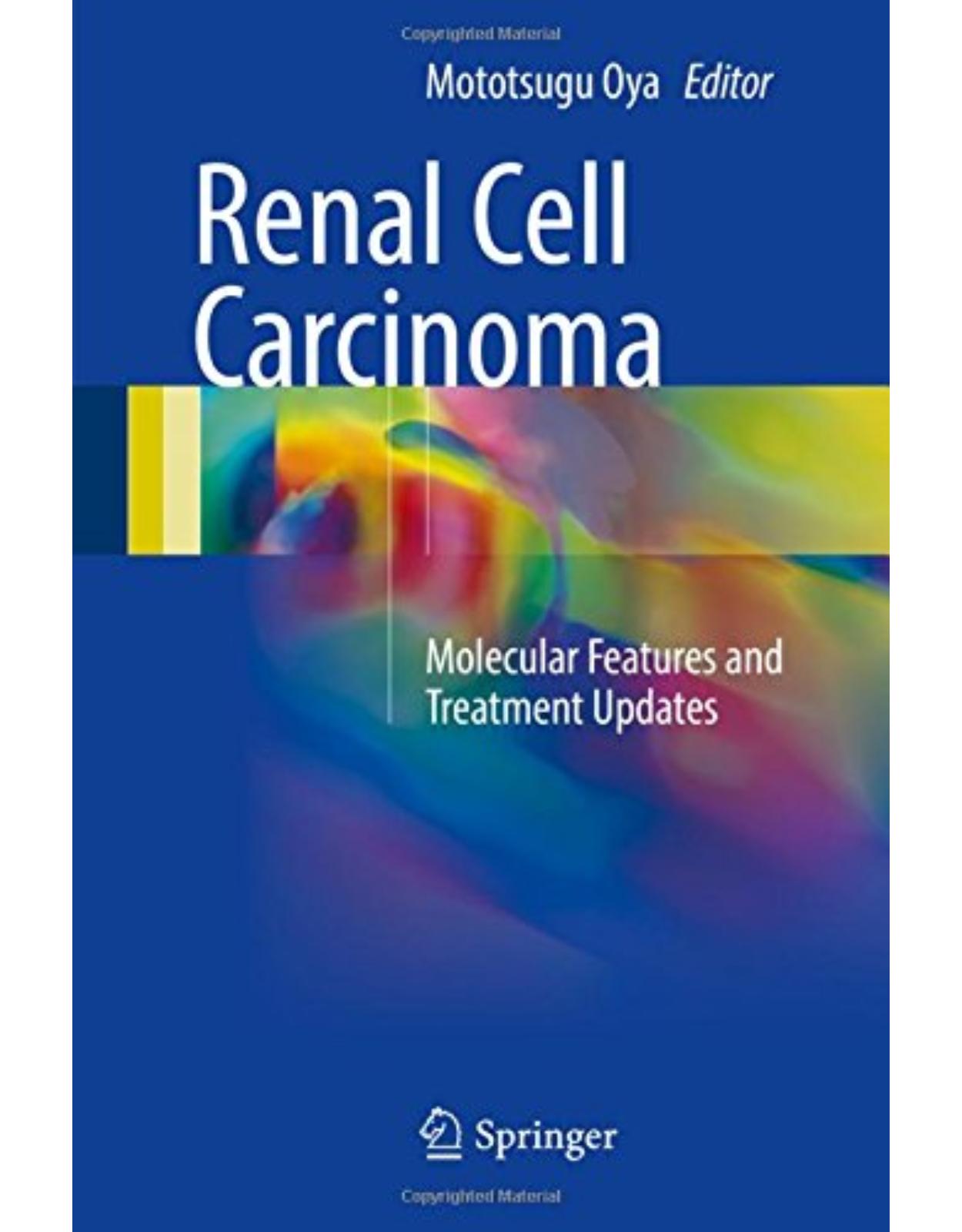
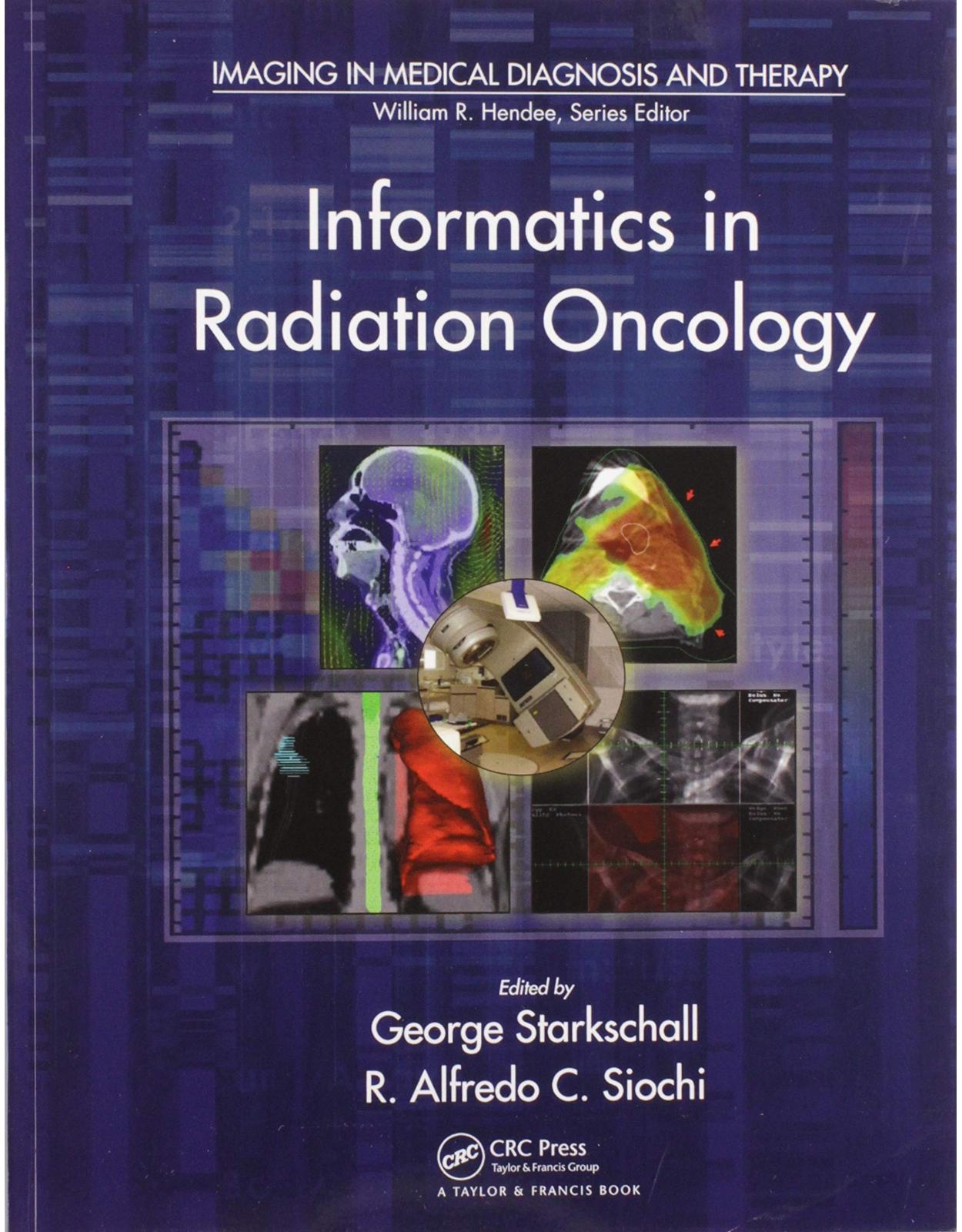
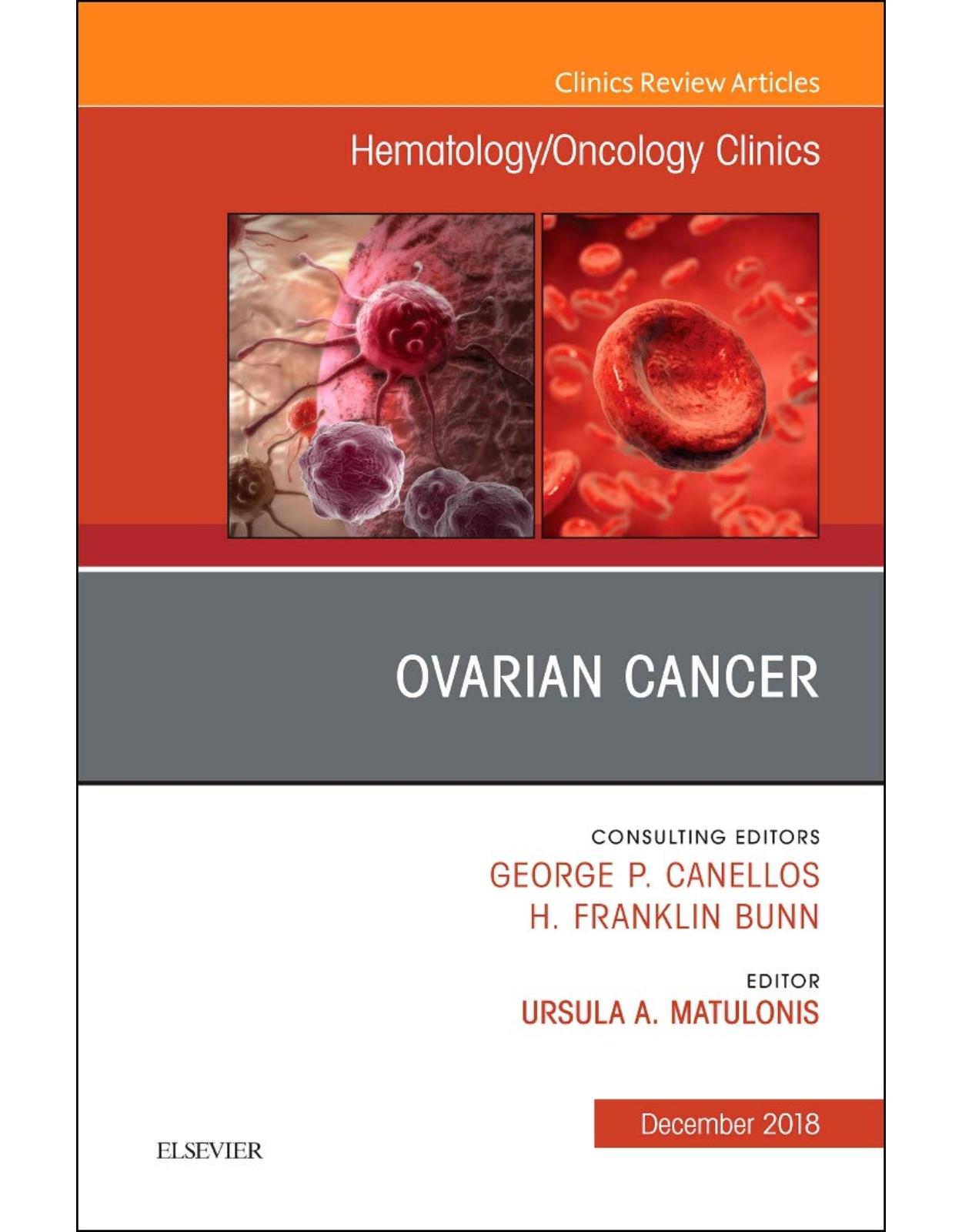
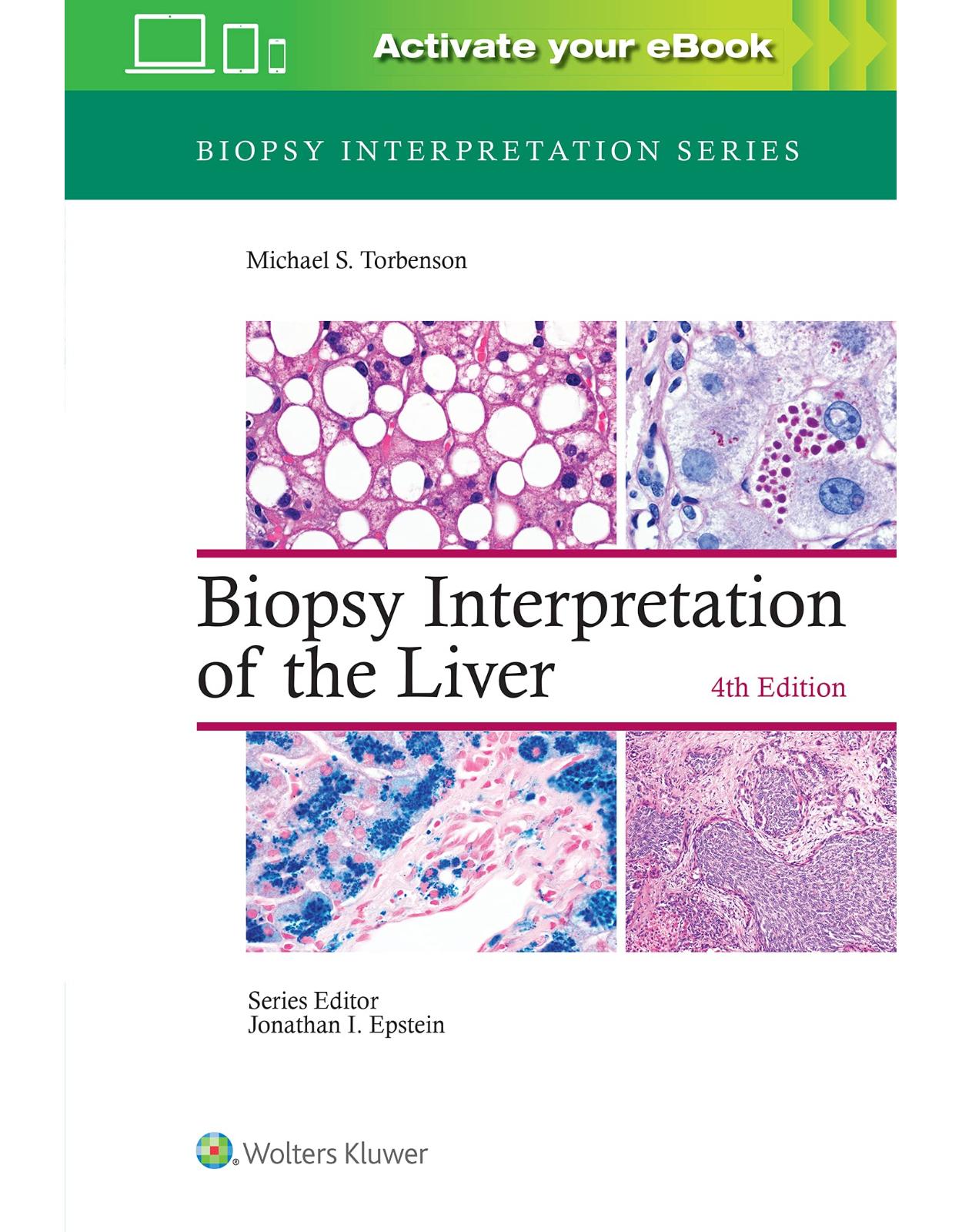
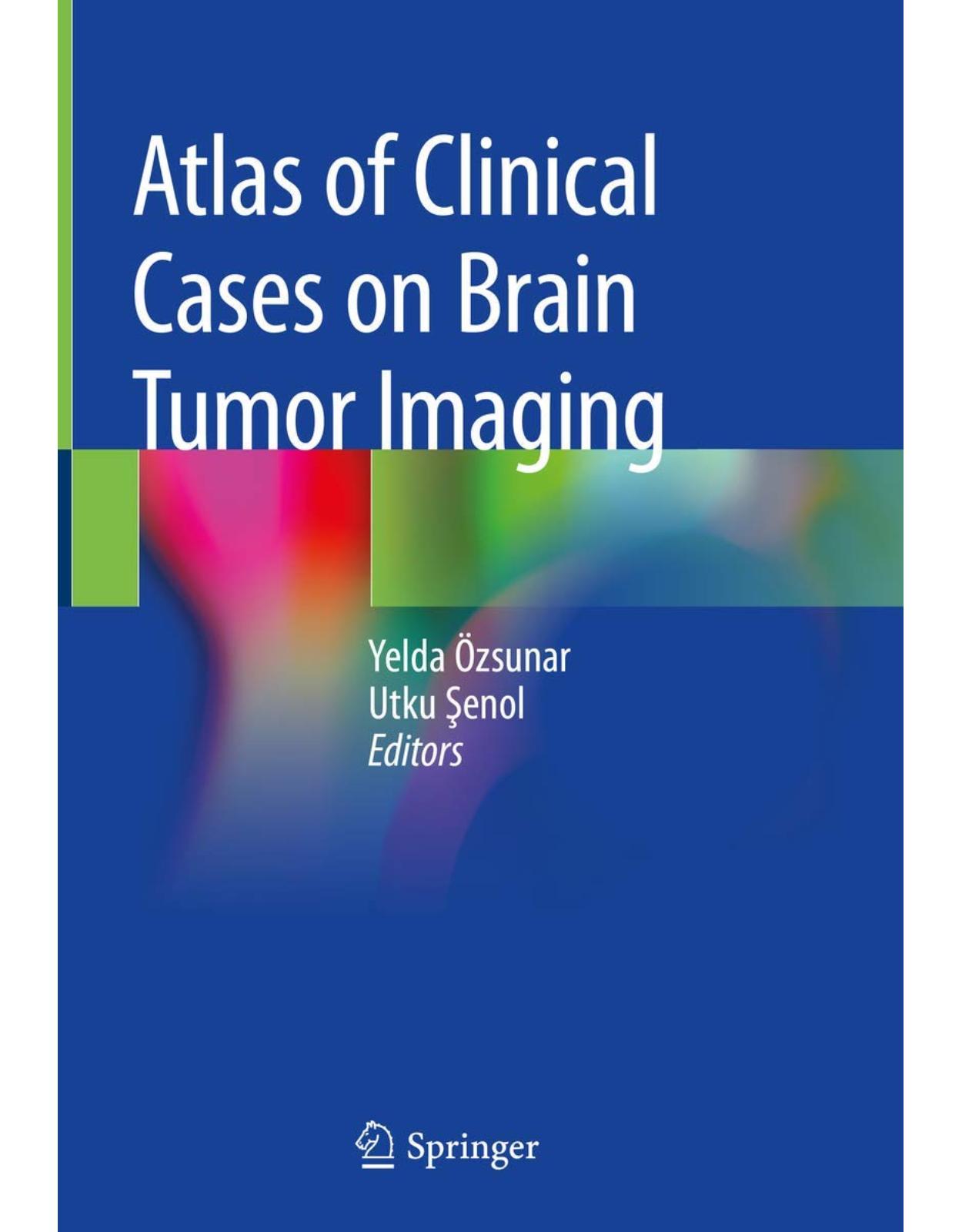
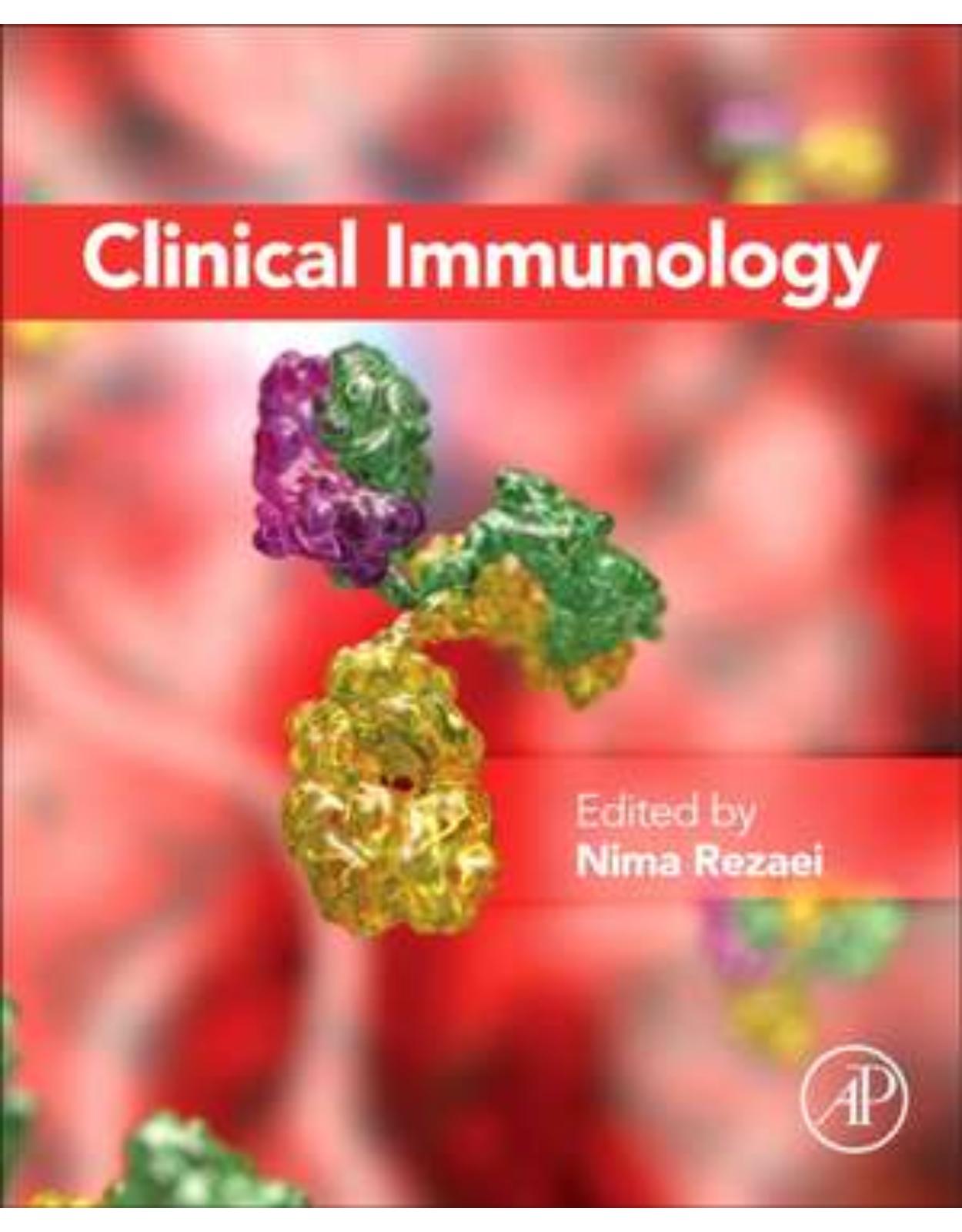

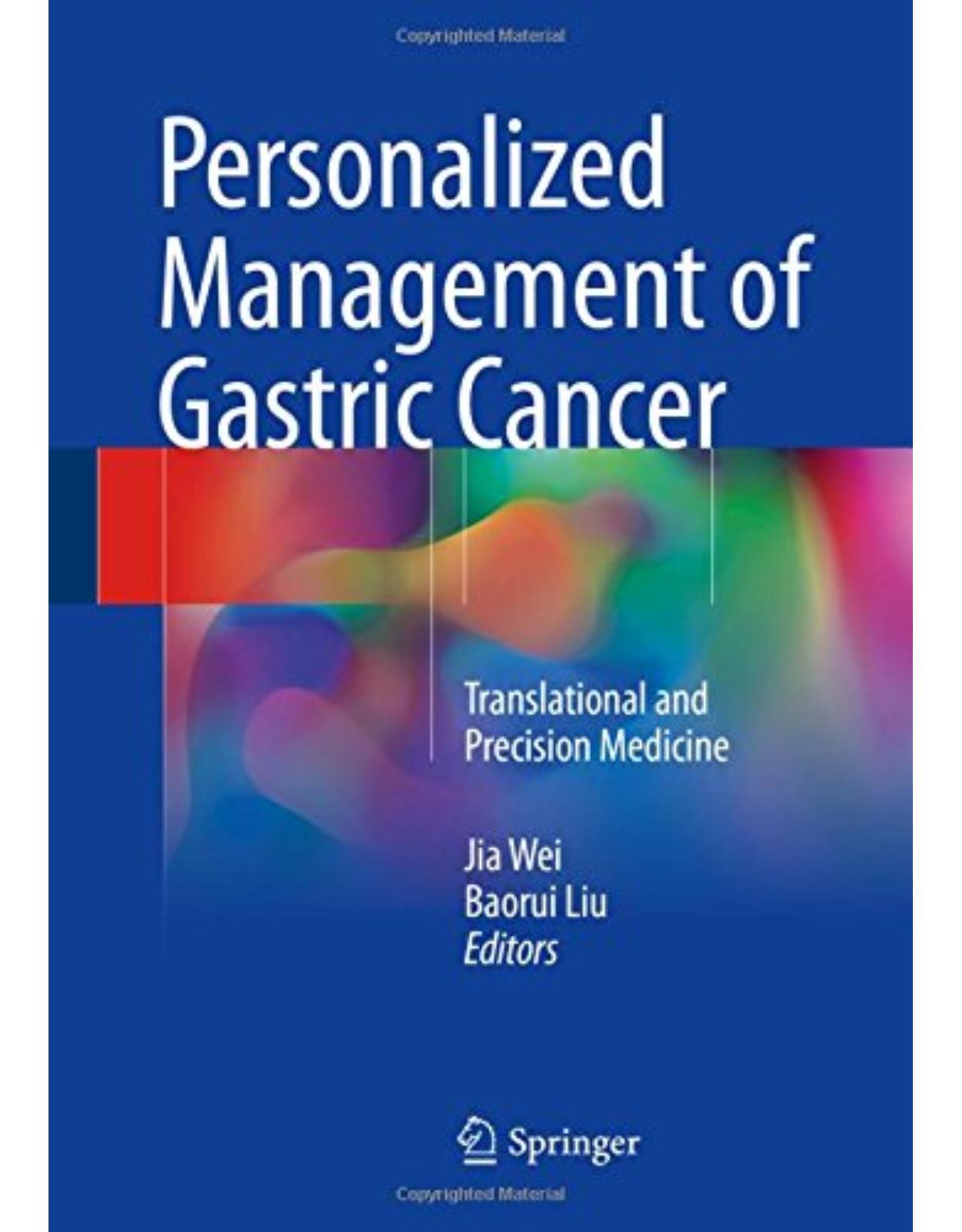
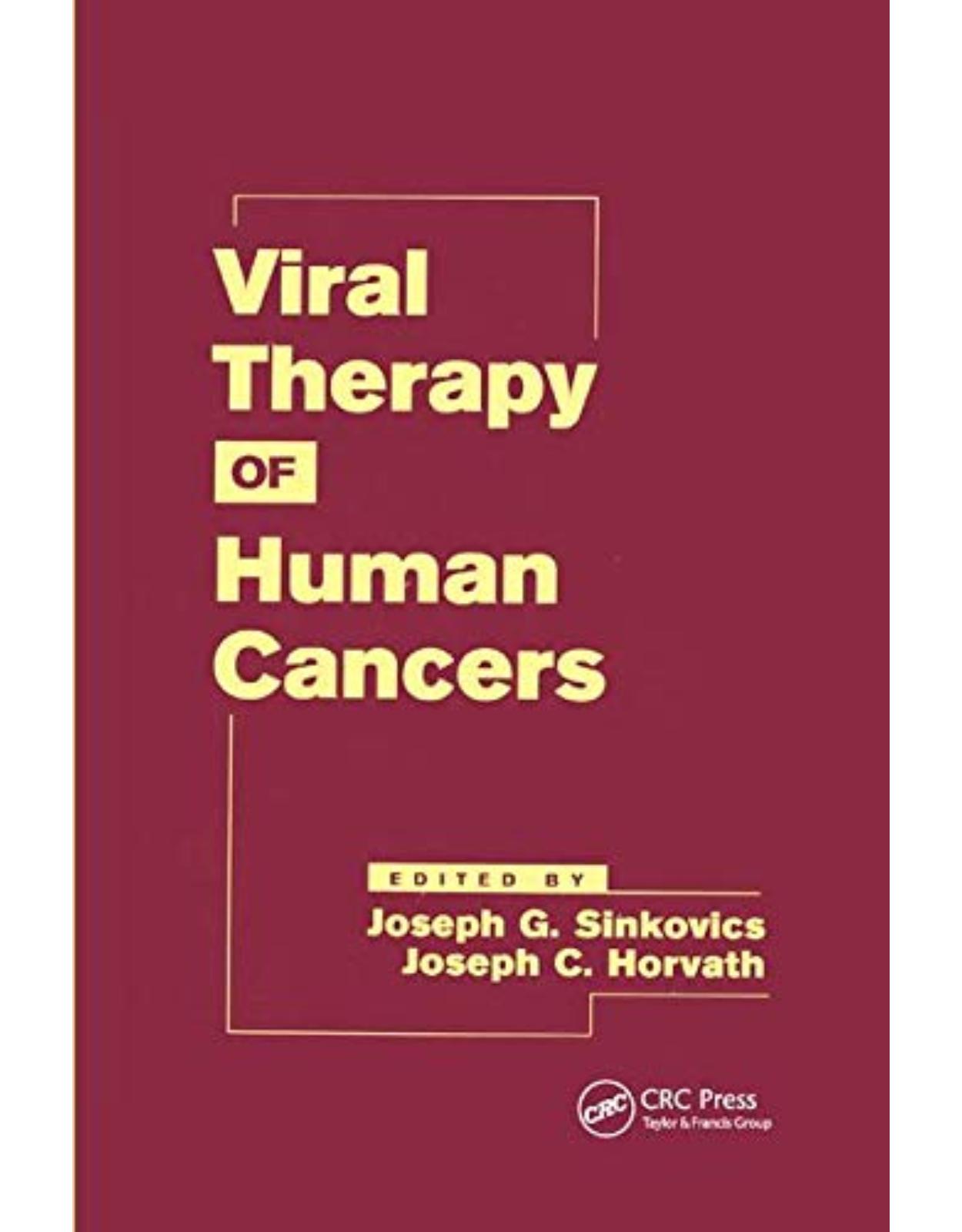
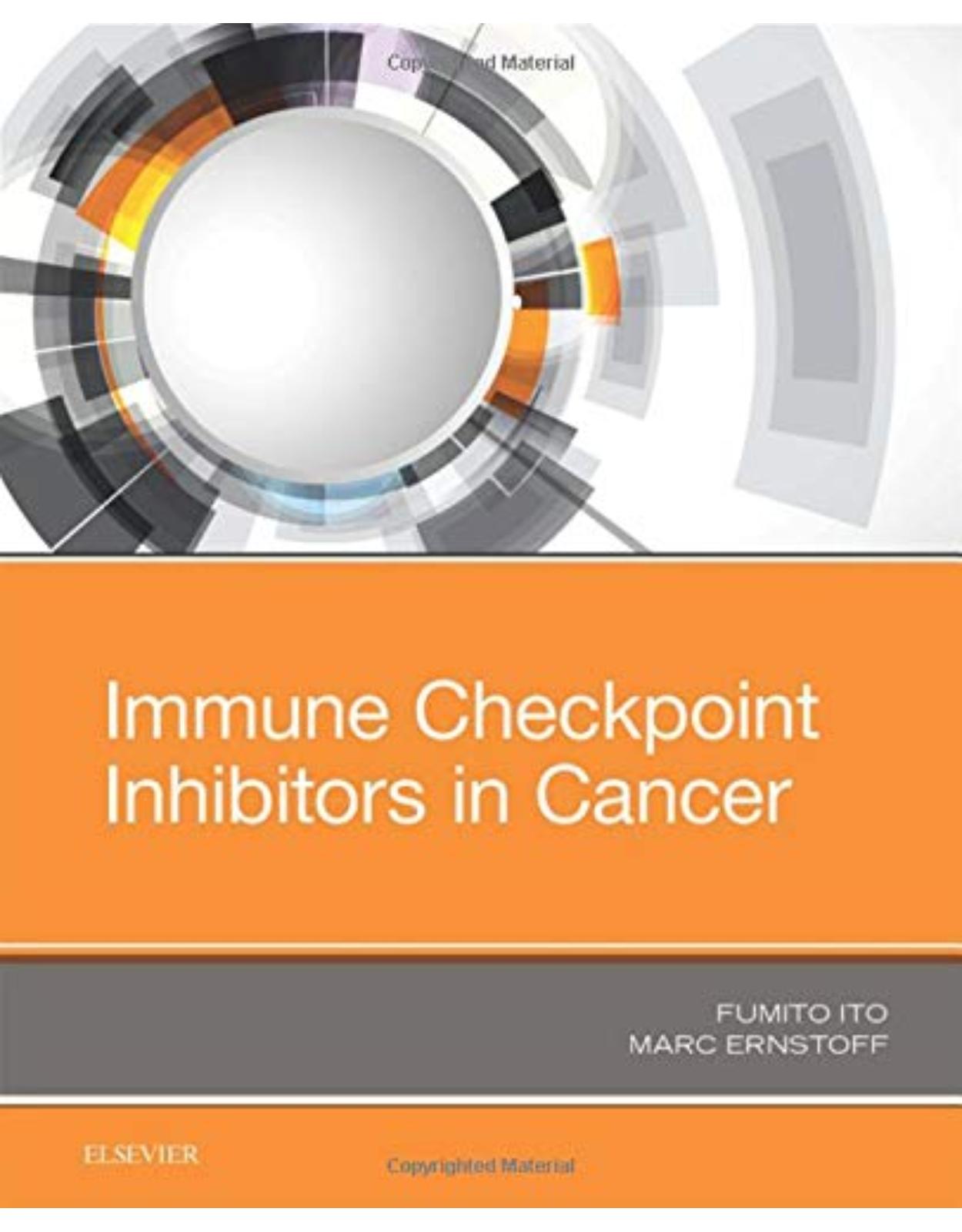
Clientii ebookshop.ro nu au adaugat inca opinii pentru acest produs. Fii primul care adauga o parere, folosind formularul de mai jos.